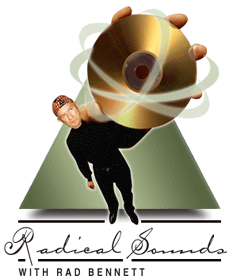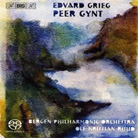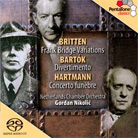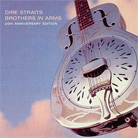 |
| October 1, 2005 Going for a Solid Center Back in August, I received most
of the latest batch of three-channel Mercury Living Presence SACDs. Again I am back on my
favorite topic: the use of a center channel. Back in August, I received most
of the latest batch of three-channel Mercury Living Presence SACDs. Again I am back on my
favorite topic: the use of a center channel.
I think that a third, center channel is essential. Phantom center channels don’t cut it with me as strongly as they used to -- not after hearing a real center image. Yet most producers and engineers seem bent on ignoring it. There are two reasons for this, I think. Hardware manufacturers make the configuration difficult, and producers of recordings lack faith in the artists. Most center-channel use sprang from video, in which a center channel normally carries most of the dialogue. Because the video monitor is generally in the center of the front soundstage, the center speaker needs to rest directly atop or below it. A whole generation of center speakers was born that did the job of reproducing frequency-response-challenged dialogue very well. But this solution was less than satisfactory for music, whose lower frequencies spill into the center. Recently, while browsing in a local video store, I noticed that manufacturers are compounding this situation by enclosing their rear-projection sets in cabinets with sloped backs -- you can’t put any sort of speaker on top of them. The solution here would be to mount the center speaker on the wall, I suppose, if you have such a wall conveniently behind your monitor. Modern receivers and preamps have eased the situation somewhat by incorporating very sophisticated bass crossover circuits. I’m able to cross over my left and right MartinLogan Ascents to my Descent subwoofer at 80Hz, and the bass-challenged Theater center speaker at a more comfortable 100Hz. Then there’s the fear factor. I think producers are afraid that if they put a soloist or lead singer in the center channel, they’re putting all their eggs in one basket and might expose that artist’s deficiencies. I have actually seen something to that effect printed more than once. I think this is absurd. Any artist worth listening to in the first place can hold a center channel. Witness Mark Knopfler in the Dire Straits set reviewed below. When you can get a center recording channel set up and a producer who knows how to use it, the results can be spectacular. Listen to the Byron Janis recording of Mussorgsky’s solo-piano version of his Pictures at an Exhibition in the new Mercury Living Presence release [SACD, 475 662 0]. The piano is anchored in the center, and the opening notes of the Promenade ring out from a specific location. The left and right speakers catch the bounce of those sounds and warm them up. It really sounds like a piano, the sound never wandering at capricious frequencies. To see how a center channel can aid a soloist in an orchestral recording, you need only hear Mercury’s new three-channel SACD of cellist János Starker playing concertos by Schumann, Lalo, and Saint-Saëns. The great cellist’s robust sound is anchored in the center, the orchestra spread out behind him. Soloist and orchestra never fight for room, each existing in its own clearly defined aural space. If you haven’t heard any of these fine Mercury three-channel recordings, drop by your local audio store and do so. Here are three more multichannel wonders to put on your shopping list:
Grieg’s atmospheric music for Ibsen’s famous play has done very well in recording studios. In the early days of stereo, Decca and EMI presented the exuberant performances of Řivin Fjedstad and Sir Thomas Beecham, both very well recorded. These releases presented only the more familiar music, yet contained more cues than the two orchestral suites. A decade or two later, more complete single-disc releases arrived from Sir John Barbirolli and Esa-Pekka Salonen. Finally, in 1987, Deutsche Grammophon released a two-disc recording conducted by Neeme Järvi that contained all the music as well as much of the dialogue. All of these recordings were excellent, but this year two performances have been released that are as good as, and perhaps better than, any earlier ones. Last winter, a sensational single-disc version from Virgin, conducted by Paavo Järvi, contained all the music that was not written to be played under spoken dialogue. And now the crowning glory -- a complete version with dialogue conducted by Ole Kristian Ruud, who seems to be the ultimate Grieg interpreter for the 21st century. The Ruud recording, containing all of Grieg’s music and much of Ibsen’s dialogue, is based on a semistaged concert version presented in Bergen in 2003. The actors and musicians are all superb, the music and drama perfectly joined. The music cues sound fresh and alive. Ruud gives attention to both the dramatic and lyric elements of the score, and his musicians play spot on. It is the kind of interpretation that immediately sounds "right," virtually eclipsing any previous knowledge of the music. This is tremendously exciting music making. The sound is excellent. The orchestra is spread out on a wide soundstage that has sufficient depth, and the high-resolution recording scores throughout. Listen to the clarinet and bassoon doubling at the beginning of the storm sequence (second disc), in which effective multichannel effects abound. The Mountain King’s troll children cry out for blood from all four quadrants of the listening area, and the Button Maker metaphorically reminds Peer Gynt from the rear channels that he will return to bring him death. You’ll believe him. This is one of the best recordings of the year. Pick it up and add the Paavo Järvi on Virgin and you’ll have the best Peer Gynts in the catalog. One will be for those times when you can experience the entire score and want the ultimate in hi-rez sound, the other for an hour when you just want to hear the music presented on an excellent-sounding CD.
The Britten and Bartók works have been recorded often, but as far as I can ascertain, this is the first time they’ve been paired on disc. The coupling makes sense -- both were written in the late 1930s, just before World War II. Pentatone has also generously thrown in Karl Amadeus Hartmann’s Concerto funčbre for Violin & Orchestra, also composed in that period. The Britten and Bartók are extroverted pieces full of energy and high spirits. The Hartmann is contemplative and introspective, a somewhat sad commentary on the composer’s situation as a German facing Hitler’s rise to power. Hartmann would not allow any of his music to be played in Germany until the war was over. The Netherlands Chamber Orchestra is a first-rate group, and leader Gordan Nikolic gets to the heart of each piece. His performances are lyrical and energetic without frivolity, and the string sound benefits greatly from being presented in the SACD format. The upper violins are bright, with natural edge yet no harshness, while the lower strings have excellent focus and splendid tone. The surround channels add just the right amount of hall reverberation to give the overall sound pleasant amounts of warmth and presence.
Warner Bros. seem to have abandoned the stand-alone DVD-Audio disc for the double-sided DualDisc. If all DualDiscs can be as great as this one, that’s fine by me. I can play this on my home system in the best imaginable multichannel sound, then pack it up and play it in my car in very good stereo. The high-resolution mix is the better way, however. The lead singers and players are up front, with the supporting instruments spread around the room in focused positions -- except when a floating image is desired, as for Sting’s famous "I want my MTV" pleas in "Money for Nothing." The bass is rock-solid and sharp as a tack without being overbearing. Mark Knopfler’s guitar licks have the lustrous sheen of a favorite automobile, newly polished and shining in the sun. Moreover, his vocals are in the center channel without being bled to the left and right channels. That’s the way to go! I’ve heard a lot of multichannel by now, and it is when the vocals are in the center channel that they shine best and all the other instruments benefit. The sound can then be free and open yet entirely focused -- as it is here. For my money, multichannel mixes do not get better than this. Brothers in Arms: 20th Anniversary Edition is a must for any serious collection, but I wonder: If this is an anniversary edition, why are there no video features, not even the well-known videos for the title song and "Money for Nothing"? Perhaps there are restrictions in playing time when the DVD-Audio side is backed by a CD side. ...Rad Bennett
Ultra Audio is part of the SoundStage! Network. |
 Grieg: Peer Gynt
Grieg: Peer Gynt Britten: Variations
on a Theme of Frank Bridge
Britten: Variations
on a Theme of Frank Bridge Dire Straits: Brothers
in Arms: 20th Anniversary Edition
Dire Straits: Brothers
in Arms: 20th Anniversary Edition